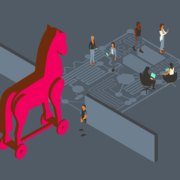That “Low-Risk” Printer Could Be Your Network’s Trojan Horse
Microsoft’s latest heads-up about a critical vulnerability in Canon printer drivers should be a wake-up call for everyone. Seriously, a 9.4 severity score? That’s not just a paper jam waiting to happen—that’s a potential network meltdown. And the fact that it’s tied to outdated drivers and BYOVD-style (bring-your-own-vulnerable-driver) attacks? That’s just plain scary.
We’re talking about attackers potentially hijacking printers to run malicious code. Imagine the chaos. And while Microsoft’s urging users to update their drivers is good advice, it underscores a bigger problem: we’re still dealing with the fallout of neglecting seemingly “low-risk” devices.
Remember that medical provider we worked with? They had a bunch of high-severity vulnerabilities, sure. But it was a “low-risk” printer that almost brought their entire network down. 14,000 hosts. Let that sink in.
During the pandemic, their IT team, understandably swamped, accidentally opened up unrestricted access to this printer. A printer! Something most people wouldn’t give a second thought to. But because RedSeal mapped their network, we saw that this seemingly innocuous device was a direct line to their entire network.
It’s a perfect example of why just scanning for high-severity vulnerabilities isn’t enough. You need to understand how everything connects, how access works, and how seemingly minor risks can become major threats.
This Microsoft vulnerability, and our experience with this medical provider, shows that even in 2025, we’re still fighting the same battles. Keeping drivers updated is basic hygiene, but it’s not enough. You need to look at networks holistically, understand all the access points and how bad actors can move laterally once in, and once validated, prioritize risks based on real-world impact.
Don’t let a “low-risk” device be the crack in your armor. The bad guys are looking for those cracks. At RedSeal, we’re committed to helping you fortify your digital infrastructure, for good. We proactively help visualize your network, identify attack paths, prioritize risk, and help you stay in compliance to ensure your business and customers stay secure.




